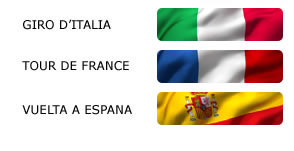

The Giro Women caravan wastes no time and already proposes a truly interesting stage in the second day of racing that will call all the general classification contenders to action. The Clusone – Aprica of 92 km, with 1,400 meters of elevation gain, is indeed a demanding stage.
to follow the live coverage of the entire stage starting at 11:45 CLICK HERE
After the start in the province of Bergamo with a slight descent, the group will face a moving and nervous route that will bring the athletes to the foot of the day's only climb, towards Aprica. The climb to the third-category mountain grand prix is regular and measures only 4 km, a first taste of the subsequent racing days, but it will be crucial to be prepared. It's an explosive 92-kilometer stage, beware of distractions.
THE TERRITORY. Already on the second day of racing, the Giro Women reserves a mountain finish for the athletes. It will be a battle, therefore. The stage will take place in some of Lombardy's environmental and historical jewels, some already famous worldwide, others that the Pink Race will give the opportunity to discover.
This happens in Clusone, the starting location that has long been part of the exclusive club of Italy's Most Beautiful Villages. Walking through its historic center means immersing oneself in a timeless atmosphere, among historic palaces, frescoed churches, and picturesque views that tell centuries of history: thanks to this heritage, Clusone has been nicknamed the "Painted City". The place to start the day perfectly is the scenic Piazza dell'Orologio, dominated by the Fanzago planetary clock, a masterpiece created in 1583 and still perfectly functioning. This extraordinary mechanism that turns counterclockwise marks not only the hours but also lunar phases and planetary positions with a single hand, representing one of the city's most iconic attractions. The Oratorio dei Disciplini is also worth a visit, which preserves one of Lombardy's most famous frescoes: the Danza Macabra, a mysterious 15th-century work that tells the theme of all men's equality in the face of death.
Lake Iseo welcomes the race by showing the wonders of its villages overlooking the northern end of the water body: the romantic Lovere and the famous Pisogne, known among other things for the extraordinary cycle of frescoes on Christ's Passion preserved in the Church of Santa Maria of the snow, not by chance defined the "Sistine Chapel of the poor".
Then one proceeds into Val Camonica, first reaching Bienno, the village of artists. In this already magnificent medieval village, numerous contemporary artists live or have left their works, so much so that a visit to the tiny village center reveals itself as a true dive into art. Near the village, the Bosco Quercus hosts numerous land art works to be admired along an easy and well-marked path.
A little further ahead, Capo di Ponte tells a story written at least 4,000 years ago on the slopes above the inhabited area. There are 104 engraved rocks from a period ranging from the Neolithic to the Iron Age that, brought to light, constitute the central body of the extraordinary National Park of Rock Engravings, which in 1979 was the first Italian site to be included in the UNESCO World Heritage.
After passing Edolo, the road gently climbs towards the finish in Aprica, a renowned ski resort on the border between Brescia and Valtellina. Worth seeing here is the Ski Museum and the ancient Plaz mill. But what leaves an indelible memory is especially the walk in the Alpine Eco-Fauna Observatory area, where deer, ibex, birds of prey, and other Alpine animals live in their natural habitat.

Se sei giá nostro utente esegui il login altrimenti registrati.